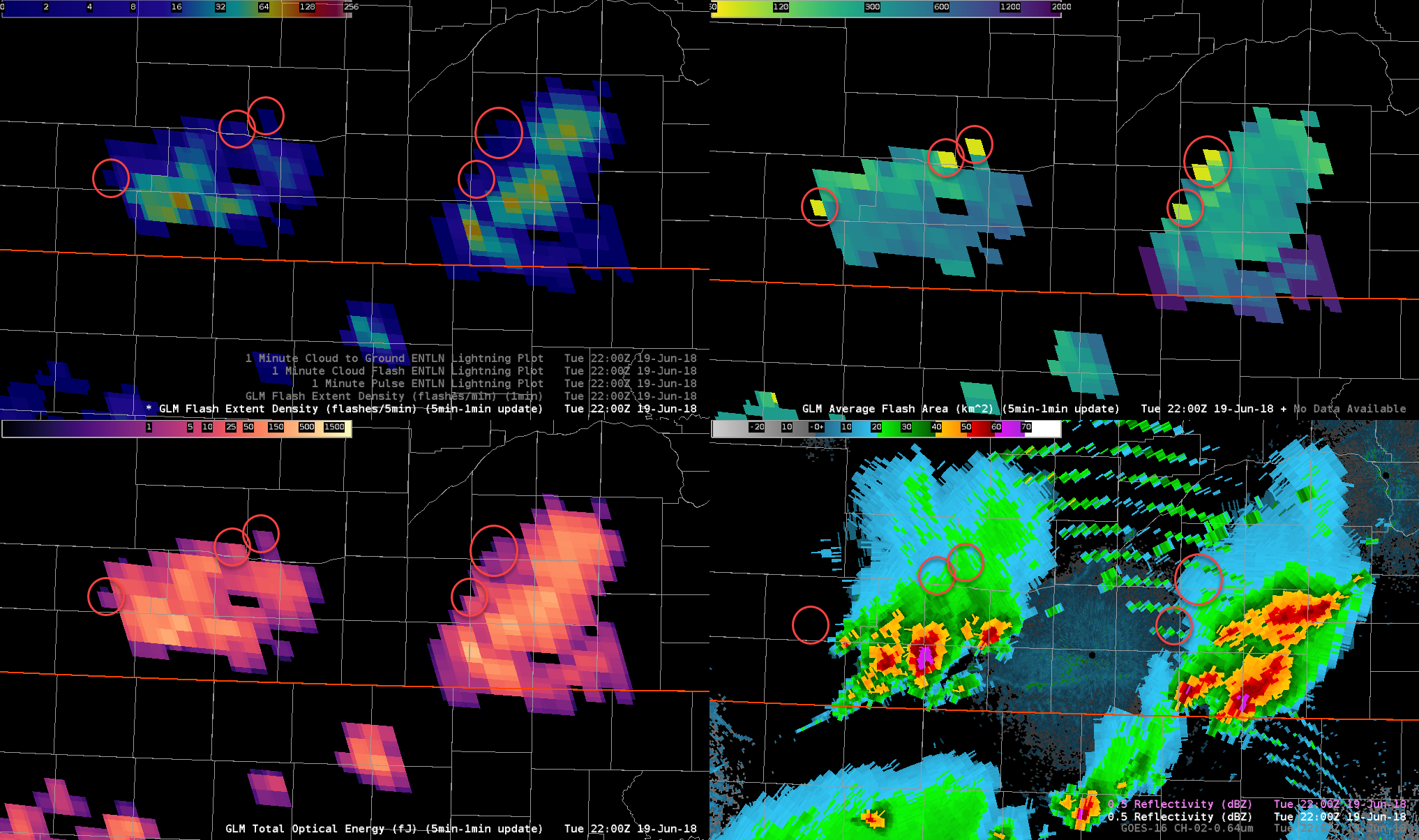While monitoring GLM across the central Great Plains on 19 Jun 2018 it was noted that several storm clusters showed single, small, dim flashes along their trailing edges. These features would come and go over time and seemed highly out of place being so far removed from the strongest updrafts. The flashes appeared to be well into the anvil region and at a greater distance from the storm cores than parallax would suggest. Neighboring pixels were more uniform and the overall lightning behavior fit within the conceptual model of mature thunderstorms.
The example shown, with the flashes in question circled, has Flash Extent Density (UL) values of 1 with Average Flash Area (UR) values consistently at 74.0 km2. The Total Optical Energy (LL) with these suspicious flashes sampled between .7 and 1.0 fJ. After communicating with Eric Bruning it was confirmed that these single, small, dim flashes as depicted by GLM on the north side of the storm cluster were likely associated with lightning further down beneath the cloud where the majority of light was blocked. Just enough light emerged along the cloud edges to light up single pixels on GLM.
The original concern was that these GLM flashes might have been false detections or some other artifact of the viewing angle of the storm given the small size and low energy output but in hindsight were likely real flashes. Eric noted that the observed values of flash area and total energy fell within the detectable ranges of the system and algorithms are in place to limit such false detections.
Since this date, I have added a visible and IR satellite image to my 4-panel to help better diagnose these flashes that appear along cloud edges.
